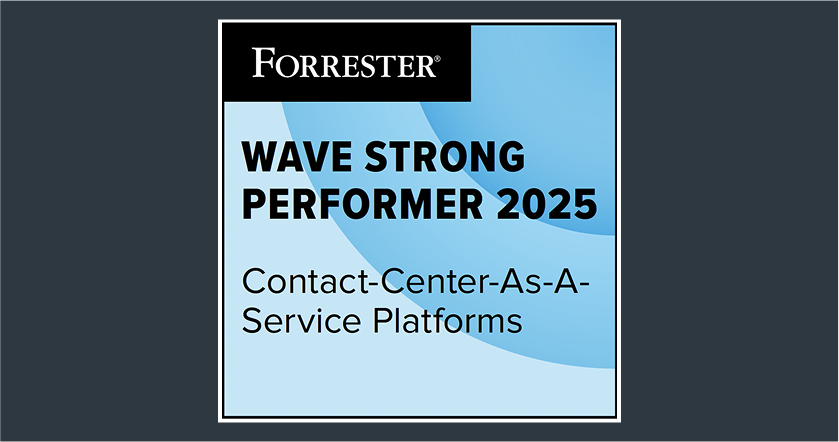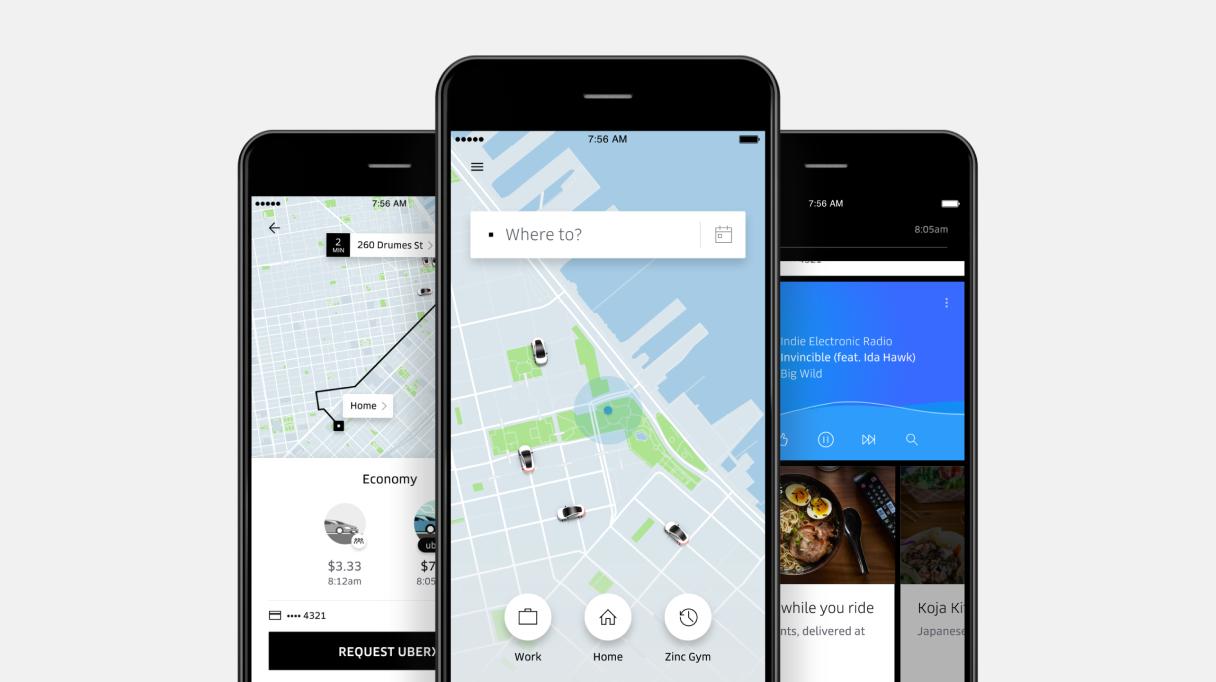What is computer telephony integration?
Computer telephony integration (CTI) is a call center technology that integrates the call center’s phone system with their computer systems, allowing for a seamless flow of information between the two. CTI enables agents to take calls on their computer systems and perform all phone-related functions — including calling, disconnecting and transferring calls — directly from their computer without requiring a physical phone.
When organizations deploy CTI, the main beneficiaries of CTI are customer service agents, particularly inbound agents. However, outbound agents and customers also benefit significantly. Here are a few benefits categorized to inbound agents, outbound agents and customers.
For inbound agents, CTI:
Integrates call handling with desktop systems, reducing manual tasks.
Automates processes like call logging and customer data retrieval.
Provides instant access to customer information, enabling quicker issue resolution.
For outbound agents, CTI:
Automates dialing processes, reducing the time spent manually dialing numbers.
Allows better tracking of call outcomes and follow-ups and facilitates more calls per hour, enhancing reach and potential sales.
From the customer’s perspective, CTI plays a vital role in improving the support experience as it:
Provides a more personalized experience as agents get instant access to customer history and data.
Reduces wait times due to efficient call routing.
Let’s understand CTI through a typical scenario from inbound contact centers.
Eliza, facing a billing issue, calls the support center. The call center is equipped with call center software that receives the call and ensures every call is logged, tracked and managed efficiently.
Eliza doesn’t have to wait for the call as she is greeted by the IVR system. The IVR politely asks her to enter her account number and select the nature of her inquiry using her phone keypad.
Once Eliza provides her information, automatic call distribution (ACD) steps in. It analyzes Eliza’s input and determines that her call should be directed to Sarah, who specializes in billing issues and is currently available.
As soon as the call is routed to Sarah, CTI works its magic. Before Sarah even answers, her screen displays Eliza’s account details, her recent transactions and the information she entered in the IVR.
Post-call, CTI automatically logs the call details into the CRM system, including call duration, reason for the call, actions taken and any notes Sarah added during the wrap-up.
Learn More: How to Leverage Call Routing for Your Call Center
Evolution of computer telephony integration system
CTI has evolved significantly from basic telephony solutions to sophisticated, AI-driven systems that revolutionize customer service management. Let’s understand how CTI evolved from basic call handling to sophisticated data integration and automation in contact centers.
☀️ 1980s: The Dawn of CTI
Basic telephony integration
Milestone: Introduction of CTI in its nascent form.
Technological advancements: Early systems focused on integrating telephone networks with computer systems.
Impact: Enabled basic functionalities like screen pops, automatic dialing and call logging, laying the foundation for future developments.
🌐1990s: Digital Transformation
Shift to Digital and IP-Based CTI
Milestone: Transition from analog to digital telephony.
Technological Advancements: Emergence of IP-based communications, enhancing flexibility and scalability.
Impact: Supported various communication channels (voice, email, chat), leading to more efficient customer interaction management.
💨2000s: The Cloud Revolution
Advent of Cloud-Based CTI
Milestone: Migration to cloud-based CTI solutions.
Technological Advancements: Development of cloud technologies offering scalable, flexible and cost-efficient CTIs.
Impact: Enabled remote access, global operations and reduced upfront costs, making advanced CTI features accessible to businesses of all sizes.
Learn More: 22 Essential Features of Call Center Software
🤖 2010s: The AI Era
Integration of AI and Advanced Analytics
Milestone: Incorporation of Artificial Intelligence and machine learning into CTIs.
Technological Advancements: AI-driven capabilities for predictive analytics, automated tasks and real-time consumer insights.
Impact: Enhanced customer service through personalized interactions, proactive support and streamlined operations.
🌏Present Day: A Unified, Intelligent Ecosystem
Current State of CTI Technology
Milestone: Achieving a unified communication platform with AI and analytics at its core.
Technological Advancements: Seamless omni-channel integration, robust security measures and Internet of Things (IoT) connectivity.
Impact: Delivers superior customer experiences, optimizes operational efficiency and provides actionable insights for continuous improvement.
How does CTI work?
CTI is primarily a cloud-based technology that uses voice-over-internet protocol (VoIP) to provide telephonic capabilities to your agents’ computer systems. The initial set-up process includes installing the call center software through your call center’s phone system, purchasing and configuring virtual phone numbers for your customer service team and then mapping teams, groups or agents to their designated numbers.
Once you have fully configured CTI in your contact center, the calling process works as follows.
How CTI works in inbound call flows
Step 1: Contact, greeting and information gathering
A customer places a call to the customer service department. An interactive voice response (IVR) system greets the user with a welcome message and collects basic details regarding their issue by analyzing the user’s keypad inputs.
The IVR also offers self-service options to check order status or initiate returns without speaking to an agent, enhancing efficiency and customer satisfaction.
Step 2: Call routing
Based on the caller’s input, ACD utilizes intelligent routing algorithms for fair call distribution, integrates with CTI for customer data and offers skills-based and priority routing. As they help the customer connects to an appropriate agent’s computer.
The agent can also choose to schedule a callback or send voicemails if they are not able to pick up the call immediately.
💡 Did you know:
Customer service software like Sprinklr equip you with skill-based routing. It is an advanced routing mechanism that matches queries with agents who have the required skillset.
Due to this each case gets its due attention and each agent gets to work on queries they excel. Your average handling time and waiting time decreases, leading to more first-contact resolutions and CSAT.
Step 3: Query resolution
Once the call reaches the right agent, the CTI integration checks the caller’s information in the CRM database (if any) and displays it to the agent on a screen pop as the call is patched to them.
If it's a new caller, CTI typically initiates basic information gathering through the IVR system. This includes prompts for essential details like the caller's reason for calling, account information (if applicable) and preferences for routing, ensuring efficient and personalized handling.
Step 4: Call quality assurance
During the call, CTI does call recording and monitoring in real-time for call center quality assurance, compliance and training purposes. Supervisors can also listen in on calls to provide real-time support and coaching to agents.
After predefined intervals, call analytics and reports are generated, offering insights into call volumes, agent performance and customer behavior.
How CTI works in outbound call flows
Step 1: Call initiation
CTI retrieves customer information from integrated systems like CRM. This includes contact details, purchase history, preferences and any recent interactions so that agents stay informed.
Step 2: Call pacing and compliance
CTI uses automated dialing systems to place calls efficiently. Depending on the dialing mode (predictive, power or progressive), CTI manages call pacing and compliance with regulations.
Step 3: Click to dial
In case of outbound calls, CTI offers click-to-dial, where agents don’t have to dial numbers manually. You can directly search for customer contacts and place calls with the click of a button.
Step 4: Caller information retrieval
When a call connects, CTI displays real-time customer information on the agent's screen. This enables agents to personalize conversations, address customer inquiries effectively, and potentially upsell or cross-sell based on customer data.
Step 5: Post-call work
After concluding the conversation, CTI automatically logs call details and updates CRM records. Agents may add notes or schedule follow-ups directly within the system, ensuring accurate record-keeping and future engagement opportunities.
Step 6: Follow-up
Post-call, CTI triggers automated actions such as sending follow-up emails, scheduling callbacks, or updating customer profiles with new information gathered during the call. This helps maintain customer engagement and supports ongoing relationship management.
👉 Learn More: What Is Callback and Its Use Cases in Call Centers
Benefits of computer telephony integration in a call center
The implementation of CTIs in both call centers and contact centers brings substantial benefits, from operational and tactical standpoints. Let’s understand the benefits that call centers and contact centers get by deploying CTIs.
Call centers
CTI directs calls to the most suitable agents automatically, minimizing customer wait times leading to reduction in hold time.
Agents have instant access to comprehensive customer data, allowing them to resolve issues efficiently on the first call leading to increase in first contact resolution.
Automation of routine tasks and real-time data access enable agents to focus on more complex issues, boosting productivity.
Detailed customer profiles provided by CTI help agents offer tailored solutions, enhancing customer satisfaction and loyalty.
CTI ensures smooth transitions between agents or departments, so customers don’t have to repeat information.
Managers can monitor calls in real-time and access detailed reports on call metrics, helping make data-driven decisions.
CTI automates call routing, logging and reporting, reducing the need for manual intervention and lowering labor costs. It also decreases the time agents spend on each call, leading to a more efficient use of resources.
Contact centers
CTI manages interactions across multiple channels (phone, email, chat, social media), ensuring minimal wait times for customers.
With a unified view of customer interactions across all channels, agents can address and resolve issues more effectively on the first contact.
CTI integrates various communication channels into a single interface, streamlining workflows and enabling agents to manage interactions more efficiently.
CTI enables seamless integration of various communication channels, providing a consistent customer experience across phone, email, chat and social media.
CTI collects and analyzes interaction data from all channels, offering valuable insights into customer behavior and preferences, which helps in refining strategies and improving service.
💡 Pro Tip: To maximize the ROI of implementing CTI, ensure comprehensive training for your agents on the new system and continuously monitor performance metrics. This will help in optimizing resource allocation, reducing handling times, and enhancing customer satisfaction, ultimately leading to significant cost savings and higher revenue.
👉 Learn More: The A to Z of Call Management
How to use computer telephony integration system in organizations
CTI is transforming the way organizations interact with their clients, streamlining customer service operations and driving remarkable efficiencies. Let’s delve into a detailed, step-by-step guide on how to implement and use CTIs in your organization.
1. Evaluate your current infrastructure and future needs
Review your current telephony infrastructure and CRM systems. Identify pain points like limited customer data access, high call volume and integration issues where CTI can come in handy to enhance efficiency and customer service.
2. Choose a CTI provider and make sure it's a good one
Explore CTI solutions like Sprinklr Service. Consider features like call routing, CRM integration capabilities, analytics and scalability.
3. Plan integration with existing CRM
Once you choose a solution, work closely with them to understand compatibility. Plan data migration and integration steps carefully and ensure all customer data is accurately mapped. Use APIs for smooth data flow between CTI and CRM systems.
4. Configure and customize the CTI
Customize dashboards to display relevant information. Include call logs, customer interaction history and performance metrics. Customize call routing based on skill sets and availability of agents to enhance efficiency.
5. Test the system
Configure CTI to integrate seamlessly with your CRM system and do thorough testing to verify data flow between CTI and CRM. Ensure synchronization of customer data, such as contact information, purchase history and previous interactions. Address any compatibility issues or data synchronization errors
💡 The Story of Emma and Her Billing Woes
Emma calls into a call center about a credit card issue. The agent is occupied with another call while Emma waits anxiously. Frustrated by the delay, she starts exploring alternative banks in hope of better service and value. The support team realizes too late how important Emma is to them as a customer and wishes they could go back in time to ensure Emma's issue is resolved swiftly and efficiently.
How could this have been avoided?
Seamless call deflection is integral to faster resolution.
The support team should have deployed seamless deflection strategies. Upon her call about a billing issue, if agents are occupied, the system should automatically redirect Emma to another channel like a secure live chat. There, AI-driven insights would analyze her query and provide immediate solutions. This approach not only reduces Emma's wait time but also optimizes the utilization of support resources.
But for that, you need incredible contact center software and Sprinklr is one of the best solutions out there.
Don’t let Emma or any other customer down. If you cannot pick up their call, text them, or provide them with alternate solutions.
CTI use cases: Enhancing efficiency across industries
Now that you know how to deploy a CTI in your organization, you would want to know some use cases of the solution across different industries to get some confidence.
Healthcare industry
Best used for: Integration with electronic health records and data retrieval ABC
Healthcare struggled with inefficient patient information access and long wait times. The deployment of a CTI integrated with their electronic health records (EHR) system allowed medical staff to quickly retrieve patient data during calls. This integration reduced wait times for patients and enabled healthcare providers to offer more timely and informed support, enhancing the patient experience.
Financial services
Best used for: Integration with existing CRM and call monitoring
DEF Financial Services needed to ensure high levels of security and compliance during customer interactions. By integrating a CTI with their existing CRM, they were able to record and monitor calls for compliance purposes while providing agents with immediate access to customer account details. This setup not only enhanced security and compliance but also improved the efficiency of handling sensitive customer inquiries.
Telecommunications industry
Best used for: Integration with existing CRM and outbound calling
In the telecommunications industry, JKL Telecom used a CTI to enhance their customer support operations. The integration of CTI with their CRM provided agents with real-time access to customer usage data and service history. Additionally, AI-driven analytics enabled the company to predict potential issues and proactively reach out to customers. This proactive approach not only reduced the number of incoming support calls but also improved customer satisfaction by addressing problems before they escalated.
Some Pro Tips for Better CTI Deployment
Use automated data synchronization to avoid discrepancies
Implement robust security protocols to protect customer data
Regularly audit system security to prevent data breaches
Ready to uplift your customer experience with CTI?
Struggling with slow call resolutions and frustrated customers?
Sprinklr Service — built on the world’s first unified customer experience management (Unified-CXM) platform — helps unify your CTI-based care operations into a powerful console that enables your agents to provide a positive, impactful customer service experience. Sprinklr’s advanced AI engine, automated workflows and CCaaS solution can help your agents:
Accept calls from across the globe and resolve customer issues using advanced voice bots and conversational IVR.
Improve first contact resolution rates using a 360° customer view, which helps provide a meaningful customer service experience.
Not just these benefits, you get more. Curious, enough? Get a personalized demo and see what efficient customer service is all about.
Frequently Asked Questions
Thank you for contacting us.
A Sprinklr representative will be in touch with you shortly.
Contact us today, and we'll create a customized proposal that addresses your unique business needs.
Request a Demo
Welcome Back,
No need to fill out any forms — you're all set.







